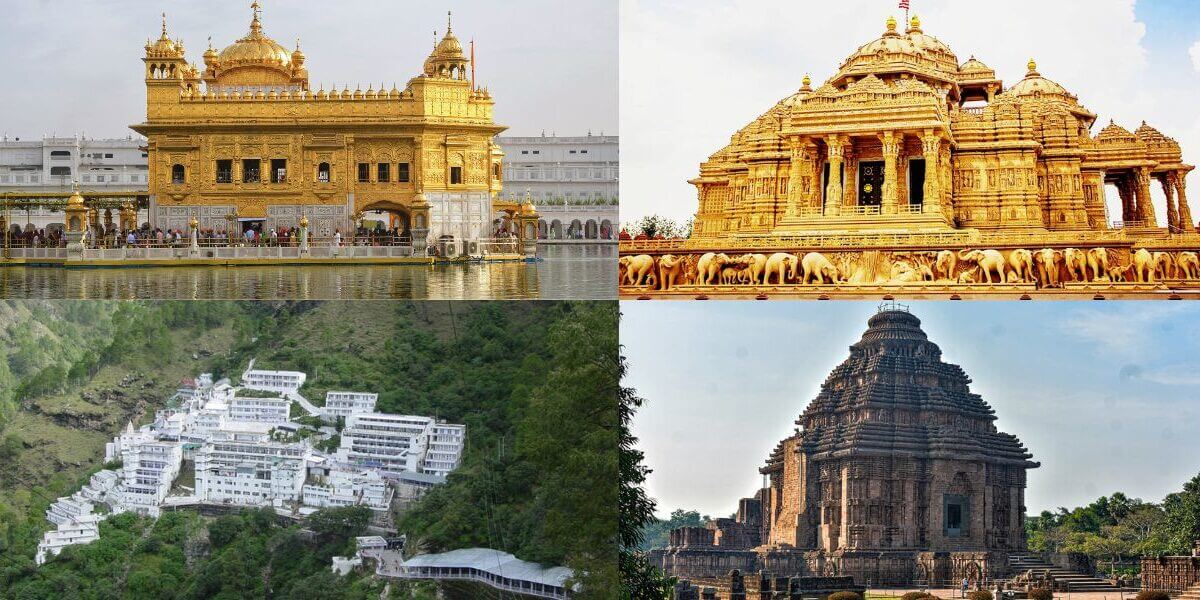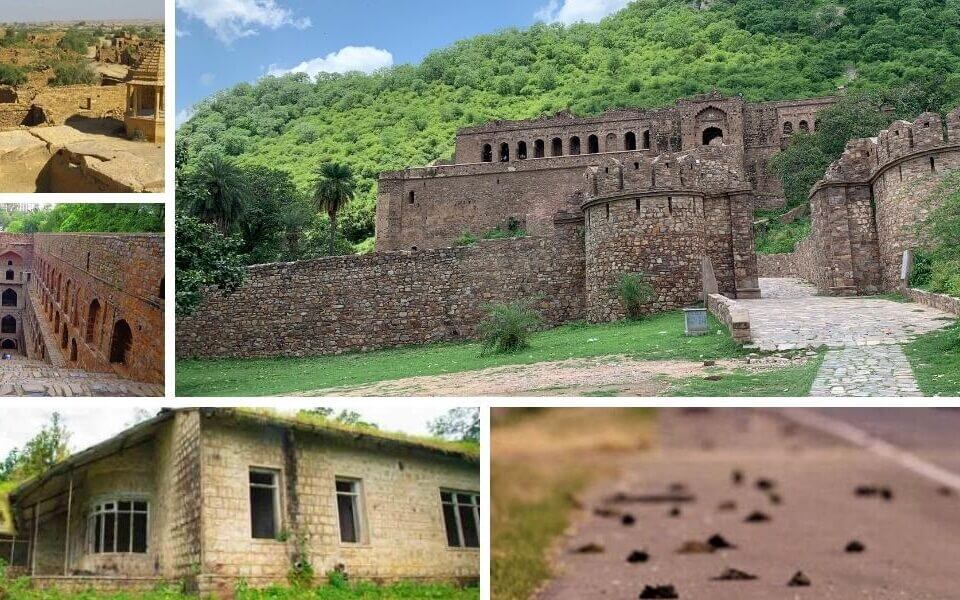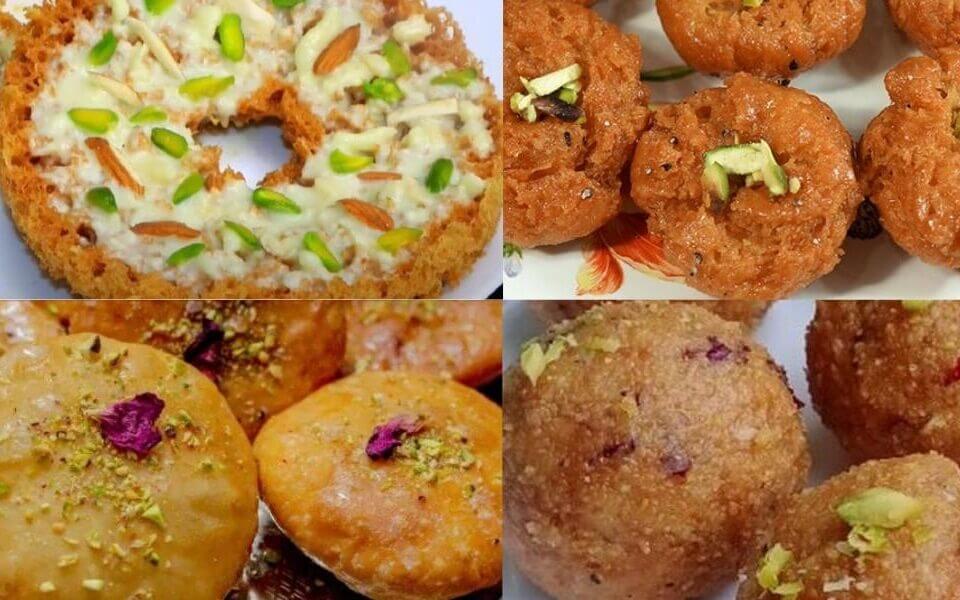10 Famous temples in India!
1. BADRINATH TEMPLE
Badrinath Temple is situated in the Himalayan Ranges in the Garhwal district in Uttarakhand, India. One would need to take a 14 km trek to reach the canopy of the hill. Temple is only open from April to November due to worse climate conditions. When the whole region was affected by flood the temple remained unaffected. The theory says that this temple was built by Pandavas. Lord Vishnu sits in the form of Badrinarayan here. The tales of Temples are mentioned in Skanda Purana and Vishnu Purana.
Mata Murti ka Mela is a celebration where Lord Badrinath’s mother is worshipped in September. Badri-Kedar temple is an 8-day fest celebrated in June in the temples of Badrinath and Kedarnath, where people are made aware of the traditions and culture of the past.
2. KONARK SUN TEMPLE
Sun Temple was built in Konark in the Puri District of Odisha during the 13th century by Narasimhadeva of the Eastern Ganga Dynasty. This temple was declared a Unesco World Heritage Site in 1984. A Mela is held here every February which is called Chandrabhaga Mela. Made in the classic Odisha style of architecture or Kalinga style, it is also known as Surya Devlaya.
The Sun temple of Konark, the Puri Jagannath temple and the Lingaraj temple of Bhubaneswar form a bilateral triangle. Konark Sun Temple complex has ruins of many subsidiary shrines and monuments around the main temple. The temple contains commendable works of art at upper and lower levels. Various types of sculptures of lords are sculpted into the walls of temples.
3. AMARNATH TEMPLE
Amarnath Temple is located at an altitude of 3888m and a distance of 168 km from the Anantnag City of Jammu and Kashmir. The Amarnath Cave which is located at the place called Lidder Valley is one of the 51 Shakti Peeth across India where parts of burnt Hindu Deity Sati have fallen. Whoever wishes to go there will have to go through a Medical Checkup because the temple is located at the peak of mountains and the Oxygen level there is not good. Hence, one should be medically fit to visit this sacred place. Here, the lingam is considered a physical manifestation of Shiva, which is believed to form on its own from ice. Parvati and Ganesha are also present here as two smaller stalagmites. It is also said that Lingam expands and shrinks with the phases of the moon, reaching its height during a summer festival.
4. VAISHNO DEVI TEMPLE
Shri Mata Vaishno Devi Temple is situated 12 km away from Katra,in Jammu and Kashmir. It is located on the slope of Trikuta Hills and is one of the 108 Maha Shakti Peetha dedicated to Lord Durga. Maa Vaishno Devi is considered to be the form of Maa Kali, Maa Saraswati, and Maa Lakshmi. There is also a Temple of Baba Bhaironath, which is a few km from the Main Temple of Maa Vaishno Devi. It is said the journey will be completed only when whoever visits Maa Vaishno Temple visits Baba Bhairo Nath’s temple too. It is mentioned in the holy book of Mahabharata that Arjuna visited this temple before entering the battlefield. The temple is now looked after by Mata Vaishno Devi Shrine Board. The three idols Mahakali, Mahalakshmi, and Mahasaraswati, all images are worshipped at the temple.
5. GOLDEN TEMPLE
Harmandir Sahib also known as Golden Temple is a gurdwara located in Amritsar, Punjab. The Gurudwara was repeatedly attacked by Mughals and Invading Afghan armies but Sikhs restored it and protected it from getting destroyed. The temple is located between the pool where many fishes reside and you may spot visitors feeding these fishes. Temple is a magnificent scenic beauty and it is the most significant shrine in Sikhism.
6. TRINETRA GANESH TEMPLE
Trinetra Ganesh Temple is the temple of Lord Ganesh, where the lord sits with his two wives Riddhi-Siddhi and sons Shubh-Laabh.
People enunciate that the lord himself appeared in the dreams of king Hammer and said that all his troubles will end soon and to everyone’s surprise the war suddenly ended the very next day. This incident led to the construction of this temple.
Every year devotees in huge numbers come here to take a glimpse of Lord Ganesh. People also send invitations here to invite the lord and his family to their weddings and other functions. Priests read out loud every invitation to Lord Ganesh. Five Aartis are conducted each day, Prabhat Aarti, Singaar Aarti, Bhog, Sandhya Aarti, and Shayan Aarti.
7. KASHI VISHWANATH TEMPL
Kashi, now Banaras is a city of spirituality and sacredness. It has many temples like Maa Annapurna, Sankatha Temple, KalBhairav, and Mrityunjaya. Kashi Vishwanath temple is one of them. It sits in the Vishwanath Gali in Varanasi, Uttar Pradesh. This holiest temple of Shiva is one of the 12 Jyotirlingas. It was constructed by a Maratha Ruler. This Temple is believed to be built in 1780, and each year devotees in large numbers come here to visit this amazing temple.
8. AKSHARDHAM TEMPLE
Started on 6 November 2005, this temple is located on the banks of River Yamuna. The literal translation of this temple is The divine abode of God.
The temple is inspired by Yogiji Maharaj who was the fourth successor of Swaminarayan. Apart from the main shrine, there are exhibits namely Nilkanth Darshan, Sahajanand Darshan, and Garden of India. Travelers can also spend some time on a boat ride or sightsee the Musical Fountain, the largest step well in India.
9. BAIJNATH TEMPLE
This temple was built in Nagara style in 1204 A.D. It is believed to be built by Manuka and Ahuka who were two local merchants. Devotees visit the chants in the name of Lord Shiva who is present here as Vaidyanath (Lord of physicians). Further, the inscriptions of this temple indicate that a Lord Shiva temple existed before the present one was built.
10. SOMNATH TEMPLE
It is one of the 12 Jyotirlingas. Situated in Saurashtra in Gujarat, it is also one of the oldest temples in the country, and references to the Somnath temple can be found in ancient Hindu texts. It is also referred to as ‘Shrine Eternal’ as it was rebuilt many times after it was damaged during attacks at different points in time.




